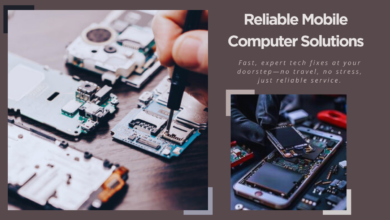Why DIY Oil Changes Are Making a Comeback in 2025
For decades, doing your own oil change was a weekend ritual for car owners—especially those who enjoyed wrenching under the hood. But as vehicles became more complex and quick lube shops more prevalent, many drivers handed the job over to professionals.
For decades, doing your own oil change was a weekend ritual for car owners—especially those who enjoyed wrenching under the hood. But as vehicles became more complex and quick lube shops more prevalent, many drivers handed the job over to professionals.
Now, in 2025, DIY oil change are making a surprising comeback, driven by shifting economics, better tools, changing attitudes, and a growing interest in car ownership and self-reliance.
Here’s why more people than ever are rolling up their sleeves and changing their own oil again—and what it means for modern drivers.
🛠 1. Rising Labor Costs and Service Prices
One of the biggest reasons for the DIY oil change revival? Money.
As inflation and labor shortages drive up costs across the auto repair industry, even a basic oil change at a shop can cost $80 to $150 for synthetic oil—sometimes more. For drivers with the time and space to do it themselves, the math is simple:
- DIY cost (synthetic oil + filter): $35–$60
- Shop cost (same materials + labor): $90–$130
- Savings per oil change: $30–$70
Multiply that by 2–4 oil changes per year, and DIYers can save hundreds annually.
💡 Bonus: Many online retailers now offer bundled oil/filter kits with free shipping, making DIY even easier and cheaper.
🧰 2. Better Tools, Simpler Kits, and Video Tutorials
The DIY barrier is lower than ever thanks to widespread access to:
- Pre-packaged oil change kits for specific makes/models
- No-spill extractors that suck oil out from the dipstick tube—no jacks needed
- Step-by-step YouTube and TikTok tutorials by pro mechanics and influencers
- Digital torque wrenches and sensors to avoid over-tightening
- Smart funnels, magnetic drain plug tools, and quick-drain systems
These tools make oil changes cleaner, faster, and more accessible, even for people with limited experience or garage space.
🧼 Even apartment dwellers are finding ways to do clean DIY changes with oil extractors and drain pans designed for portability.
🌱 3. Environmental Awareness and Control
Eco-conscious drivers are embracing DIY because it offers better control over oil disposal. While many quick lube shops dispose of oil responsibly, others have questionable practices.
By doing it yourself, you can:
- Recycle used oil at a certified drop-off point
- Ensure no spills or leaks during the change
- Choose eco-friendly synthetic oils with longer life
- Use reusable filters (on some models) to reduce waste
Plus, modern synthetic oils in 2025 can last up to 10,000–15,000 miles, meaning fewer changes and less environmental impact—if you monitor your oil’s condition carefully.
🚗 4. Car Enthusiasts and the Resurgence of Vehicle Ownership Culture
Post-pandemic, there’s been a resurgence in hands-on car ownership. More people are restoring older vehicles, building project cars, or simply enjoying the feeling of maintaining their own ride.
This culture shift is fueled by:
- The popularity of online DIY and car repair communities
- A pushback against the “disposable car” mindset
- Rising interest in used car values and preservation
- The growth of van life, overlanding, and auto adventures
DIY oil changes are often the gateway repair for these enthusiasts. It builds confidence and opens the door to brake jobs, filter replacements, and other light maintenance.
🔧 “If you can change your own oil, you’ve taken the first step to knowing your car.”
🧾 5. Trust Issues with Chain Shops and Quick Lubes
Many drivers have had bad experiences at oil change chains, including:
- Upsells for services they didn’t need
- Low-quality filters or bulk oil
- Overtightened drain plugs or stripped oil pans
- Missed or incorrect oil specifications
By doing it yourself, you know exactly what’s going into your engine—from the brand and viscosity of oil to the filter quality and torque on the plug.
🛡️ DIY oil changers take pride in doing it right instead of rushing through a 10-minute service.
📱 6. Maintenance Tracking and Smart Reminders Make DIY Easier
Thanks to technology, you no longer need to guess or write on your windshield sticker. Apps and connected car systems now:
- Remind you when your oil change is due based on driving patterns
- Help you log oil type, date, mileage, and filter brand
- Offer QR codes for step-by-step instructions for your car
- Connect to sensors that monitor oil quality in real time
These tools have made DIY maintenance more informed and data-driven, helping prevent common mistakes.
🏁 7. Electric Vehicle Delays and ICE Longevity
With EV adoption slower than predicted in some regions, many people are holding onto internal combustion engine (ICE) vehicles longer—especially well-maintained, efficient models.
This means:
- More owners are motivated to take better care of their gas-powered vehicles
- Older cars need regular attention, and DIY oil changes help maintain their value
- People buying used cars are doing their own maintenance to restore reliability
For drivers who aren’t ready to switch to electric, DIY oil changes are part of preserving engine life for the long haul.
🔄 The Rise of Community-Based Maintenance
In some cities, co-op garages and community tool libraries are helping renters and urban drivers perform DIY oil changes and more, without needing a home garage. These spaces offer:
- Shared tools and lifts
- Waste oil collection services
- Safety classes and instruction
- Supportive, inclusive environments
This movement reflects a broader desire to reclaim mechanical knowledge, reduce repair costs, and build community around self-reliance.
🚫 What’s Still Holding Some People Back?
Despite the comeback, DIY oil changes aren’t for everyone. Some challenges include:
- Lack of space (especially in urban apartments)
- Disposal hassles for used oil
- Fear of doing something wrong (cross-threading, wrong oil, spills)
- Modern cars with tight engine compartments or underbody shields
- Inconvenience compared to drop-off services
Still, these hurdles are being lowered each year thanks to new tools, better education, and online support.
✅ Final Thoughts: Why It Matters
DIY oil changes are more than a trend—they’re part of a growing movement of empowered, informed car owners taking back control of vehicle maintenance.
Whether for financial, environmental, or educational reasons, this comeback is reshaping how people approach car care in 2025.
🧠 It’s not just about saving money—it’s about understanding your car, making intentional choices, and building a skill set that can serve you for life.
So if you’ve been thinking about doing your own oil change for the first time (or the first time in years), 2025 is a great time to start.




